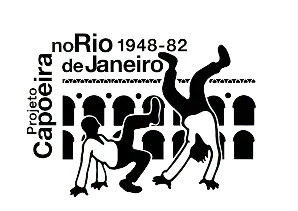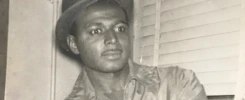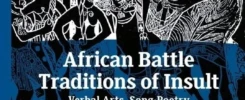By Roberto Pereira.
Little known today, even among capoeiras, the jackknife has slowly lost its place in capoeiragem. Its decline occurred in parallel with the emergence of a sporty capoeira geared towards the entertainment market, from the middle of the first decades of the 20th century, in Bahia and Rio de Janeiro in particular.
This new, modern capoeira, in search of new audiences and customers who could pay to see it or learn it, progressively adapted to the ring, the stage and shows. Adapting to modern times brought with it a re-reading of its past, seen as violent, bloody and associated with the feared gangs (maltas) of the 19th century. This reinterpretation would lead, around the beginning of the 21st century, to a discourse of “citizen capoeira”, in which capoeiras don’t touch each other in the roda and in which any sign of violence is pointed out as something unrelated to the practice. Nothing could be more fallacious.
Thus, even in the 20th century, the berimbau dethroned the switchblade as capoeira’s greatest symbol. Despite this almost complete obliteration of the jackknife, its use and handling by capoeiras, a practice that, as we can see, dates back to the days of slavery, has not disappeared. A few rare masters have managed to preserve and pass on this ancestral teaching to a few disciples who have taken it upon themselves to perpetuate the tradition of the jackknife game.
A fictional documentary
This fictional documentary that we are now making available to the public is a small contribution to bringing to light the importance of the jackknife in the history of capoeira. It is also a way of introducing the public to the jackknife game itself, which is largely unknown.
We started recording the film completely independently in 2018 and finished it in 2023, when we raised a small amount of money to complete it. For its realisation, we had the fundamental and indispensable participation of two great navalhistas from Maranhão, mestre Kaká Serafim (Cláudio Serafim) and contramestre Jorcelso Sousa, heirs to a lineage of navalhistas whose ancestor is another expert navalhista and capoeira mestre: Alberto Euzamor.
May the film provide a good debate. And that new generations get to know and contribute to the preservation of what is yet another fantastic element of black Brazilian culture.
A big Axé!
Enjoy the opportunity to watch the fictional documentary O Fio da Navalha, de Roberto Pereira:
Synopsis:
Before the berimbau, the razor was the greatest symbol of capoeiragem. Navalhistas and capoeiras were the terror of the slave society. Centuries later, São Luís do Maranhão remains one of the largest strongholds of navalists in Brazil.
Ficha técnica:
Research, Script and Direction: Roberto Pereira Photography: Paulo do Vale Edition and finalisation: Marcelo Souza Soundtracks and soundmix: André Piruka Production: Coletivo Volta do Mundo e Ina Ilha Direct Sound: Inaldo Aguiar Second Camera: Roberto PereiraRoberto Pereira studied film directing at the Darcy Ribeiro Film School (RJ) and has a PhD in Comparative History from the Federal University of Rio de Janeiro (UFRJ). He is the author of Rodas Negras – capoeira, samba, theatre and national identity (Perspectiva, 2023). He has directed and scripted films screened at film festivals and national and international events. He was a Visiting Fellow in the History Department at Harvard University.




